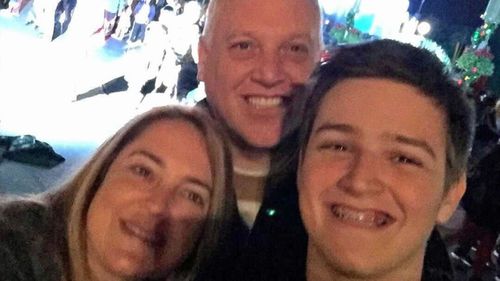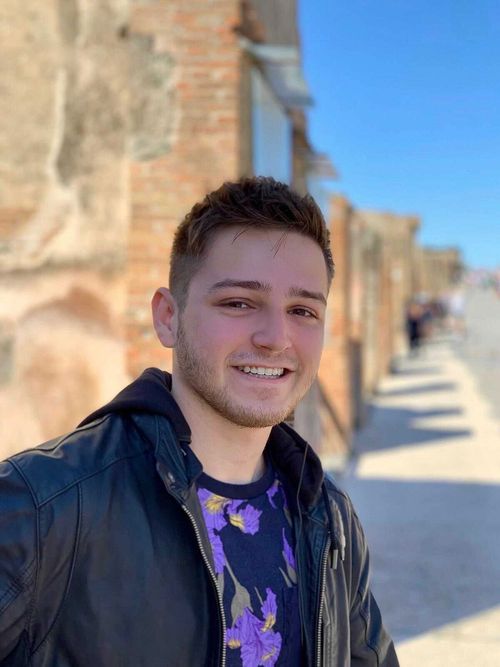When Michael Sayman made the top 10 list on the App Store he raced into his parents’ room to rouse his sleeping father. A month later a cheque for $5000 arrived in the mail.
It was 2010, and a then 13-year-old Sayman had launched his first app. A year later he was making upwards of US$10,000 ($13,400) a month and by 17 had been hired by Facebook boss Mark Zuckerberg.
Twelve years on, he has left high-profile roles at Facebook and Google to return to his roots, taking a job with multi-billion dollar gaming giant Roblox.
“It was honestly quite challenging for me personally,” the now 24-year-old told nine.com.au in an email about his swift career progression within the US tech industry.

Sayman was still in high school when TV news cameras followed him around his Miami school for a glimpse into his daily life.
Tough years, fake smiles
He had more than doubled his monthly app earnings to about US$14,000 ($18,500) and the media had dubbed him a tech wunderkind.
Yet behind the scenes at home, his family’s financial situation was dire.
The 2008 global financial crisis had all but crippled his family. His app earnings were soon being used, without contest, to help pay the household bills, his sister’s school fees and even bolster his immigrant parents’ Peruvian chicken restaurant.
His parents would eventually lose their jobs, and the family their home in Miami.
Sayman would also lose his childhood. His focus became about providing for his family and the self-taught developer turned to studying the app market to keep food on the table.
“My mom is from Peru and my dad was from Bolivia. I couldn’t be more proud of my heritage and where I come from. I can never forget that, and it will always be a part of who I am,” he said.

“At the same time, a lot of the expectations that came with ‘success’ followed me through the years in my life where I really had yet to learn the most basic of life skills.
“The dichotomy was one where I knew I had global impact with the social products I was building, but at the same time I struggled to see the value in the some of the basic life skills that most people come to discover as they go through their college years.
“That took me longer than I would’ve liked it to take.”
The first social network
During his high school years, Sayman created the popular picture word game 4 Snaps. It was a significant step up from his debut Club Penguin Cheats App, based on a childhood cheat blog about the free online game Club Penguin.
It got him noticed by one of the industry’s top players, Mark Zuckerberg.
“Facebook discovered it after I had built the app using the backend service they had recently acquired,” Sayman said.
“Zuckerberg wanted to meet up with me after he heard about my social games and how I built them. That’s where it all started.”
Sayman was just 17 when he met with the social networking magnate. He would make the leap from high school to the workforce after being offered an internship, before becoming Facebook’s youngest engineer. He would climb the ranks to product manager and product designer.
At Facebook he would become instrumental in guiding the company to engage with a younger audience by building features that interested Zuckerberg.

This included helping to build Facebook’s own version of the ‘Stories’ feature — which now has an estimated 300 million daily users.
“We wanted to give people the opportunity to share lightweight moments from their day to day in a way that made them feel comfortable to express themselves,” Sayman said.
“Snapchat had done an amazing job with the initial story-like format on their platform. At the same time, it was clear that the mobile form-factor wasn’t like the desktop…
“I felt it was crucial for us to adapt the composer on the social platforms at the time to reflect the clever-evolving hardware that people used to communicate — especially in my generation.”
Moving on

By 2017, after three years at Facebook, Sayman was lured by Google to move on.
“Personally, I felt like it was time for me to take on a new challenge. I had joined Facebook when I was just a kid and with that, came this notion of them being like family to me,” he said.
“At the same time, my perspective was limited to what I had experienced at Facebook. And I knew after a few years and the success of Stories, that it was time for me to gain some perspective. Google reached out to me around then, and shortly after (I) decided to make the jump.”
At just 21, Sayman joined the internet behemoth as a product manager, focusing on Google Assistant, Google Chrome and YouTube.
Google Assistant has an estimated 500 million users, while an estimated 2 billion users log in to YouTube each month.
“One of the biggest things I hoped to achieve at Google was to bring my perspective and background into their product,” he said.
“I certainly feel like I was able to achieve that in the various launches we had, as well as the influence I was able to have on the growth of their existing products.”
He said he also set out to gain new perspectives by joining Google.
“Those new perspectives help me understand the scope and variety of product teams out there in ways I didn’t have a clue about before. But surprisingly, I didn’t expect to learn and grow as much as I did when I got there,” he said.
“I was 21 when I first started at Google, and at that age, I certainly lacked the foresight to understand what would come of the next few years in my life.
“But wow, did I learn.
“These past few years at Google have been some of the most enlightening years of my life. And it’s always possible I cross paths with many of those amazing people again, eventually.”
Personal connection
This week, Sayman announced by tweet he had left Google after more than three years to join Roblox to lead social.
“At both Facebook and Google, I was lucky enough to join at points where the companies were at critical points in their product development, ones that I became heavily invested in pushing and helping build,” he said.
“I feel similarly with Roblox, but on top of that, the product has a very personal connection to me. Many of the games I played as a kid helped me reach where I am today.”
He hopes to bring his own perspective and background to Roblox.
“It’s a very personal connection to the product for me, and my primary drive is that I believe their mission will help others out there who maybe grew up like me, with backgrounds like mine, to express and discover their full potentials,” he said.
Contact reporter Kate Kachor at [email protected]